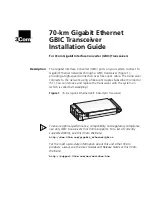
AB- V-MA-00650
01 February 2021
JF/RR
11
LD900 and INS
Commissioning Guide
Alignment / Calibration
The IMU and antenna placements must be aligned to the vessel frame. The system configuration requires the
following measurements;
•
Lever arm (IMU to Antenna 1)
o
X (Starboard Positive)
o
Y (Forward Positive)
o
Z (Up Positive)
•
Heading
o
Rotational offset from GNSS1 to GNSS2 antennas
•
IMU Rotational Offsets
o
X (Pitch)
o
Y (Roll)
o
Z (Yaw)
Precise offsets can be determined by performing a dimensional control survey of the vessel while alongside or
in dock. The dimensional survey measurements should be taken using an independent system, free of
installation or misalignment errors.
In addition to the IMU rotational offsets, the heading alignment offset should also be computed between the
two GNSS antennas and these results used to adjust the rotational offsets to precise values.
Note:
If the rotational offsets are greater than +/- 1
⁰ accuracy the INS computations may still initialise, but the
solution will be negatively impacted and not maintain a converged solution, once vessel motion occurs.
It is also important to accurately measure the lever arm distance (XYZ) from the IMU centre of navigation to
the antenna reference point (ARP) of the GNSS1 antenna. These translational offsets can be measured as
part of the dimensional survey. Ensure the ARP to phase centre Z offset is adjusted in the final application of
the offsets. The translational offset measurements must be accurate to /- 1cm.
To fully calibrate and converge the system for the active PPP solution to use INS aiding vessel movement will
be required. Typical vessel movement during transit will be adequate for convergence, this calibration will take
several minutes up to 10 minutes. This calibration process is performed automatically by the system and does
not require any user interaction. Where calibration is taking a prolonged period, the vessel should perform
figure of 8 movement.











































